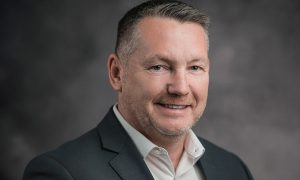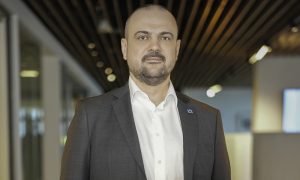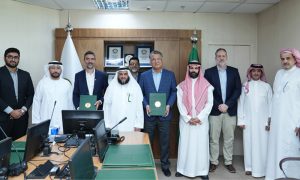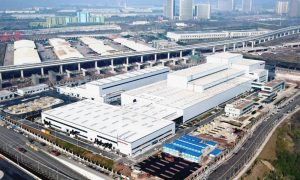Broadening business horizons
MEC speaks to TBH’s Colin Fox and George Matta about their plans to drive business growth and expansion in the Middle East
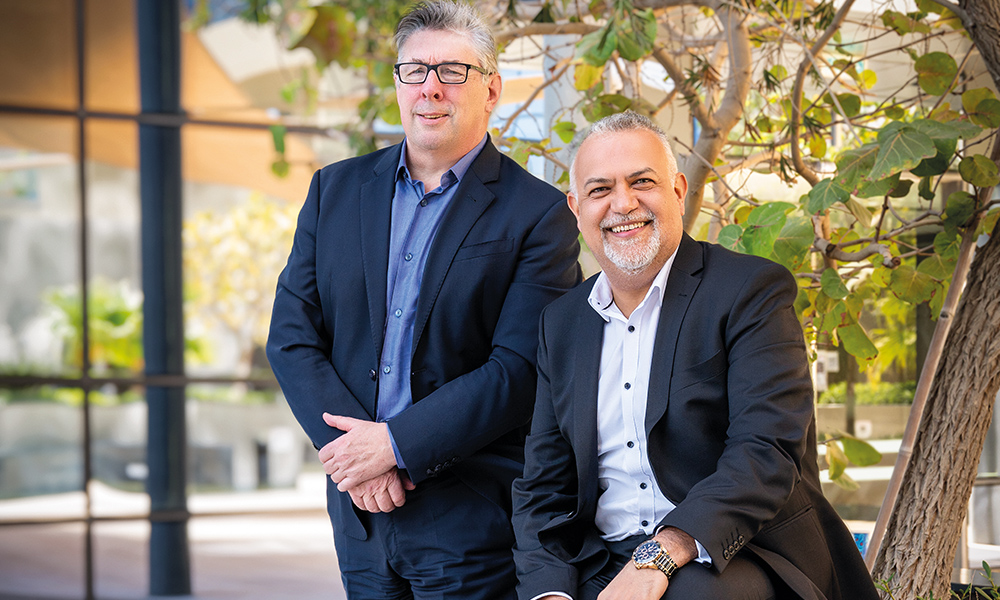
What are the factors driving the transition of a major consultancy into broader international markets? What are the benefits of combining project management and dispute resolution credentials? Middle East Consultant spoke to Colin Fox and George Matta, Directors and shareholders at TBH, who have recently relocated with the aim of driving the business’ consistent growth and expansion into a touchstone Middle East presence.
For each of you, having arrived from Australia, is this your first experience of working in the Middle East?
“I had my first experience of working in the Middle East back in 1990 – and I’ve been travelling extensively since then,” said Colin. “I have worked here in four distinct periods, all across the region – Oman, Saudi, Kuwait and then, even after moving back to Australia, I still continued to visit the region.”
“Of course, you have to understand that travelling internationally like this is a core part of working for an Australian company. There’s no way around it – in fact, even domestic travel in Australia is on a challenging scale. Remember, for example, that it’s a five-hour flight from Sydney to Perth – which is comparable to crossing the Atlantic, going from London to New York!”
George continues, “My first experience with major projects here in the Middle East was when I worked on the Cairo Metro, on the contractors’ side; this involved a massive range of infrastructure and delivery issues, creating an extensive system across a metropolis that is one of the oldest and most highly developed in the world. Then I moved to Doha to work on Doha International Airport; then to the UAE to work on Dubai Airport, just as the emirate was embracing the vision of becoming a world-class tourism hub; then, on to Abu Dhabi Airport – and then, Dubai Mall!”
Are there any parallels that can be drawn between your work in Australia and the Middle East – and are there are parallels between Australia and the Middle East in terms of markets and industries?
“Australia combines a high number of projects with a low population, and there is always a need to import talent and skills for these projects – and this in itself is quite comparable to what we find in the Middle East,” says George.
“I would also argue that there are many similarities in terms of the style of projects themselves. In Australia, the majority of the big projects are all resource-driven – oil and gas; mining; transport, energy; renewables, and so on. Projects with very challenging logistics and often featuring a diverse, complex raft of stakeholders. For example, look at Sydney, where a major metro and road system was built through the heart of an iconic city, and competing interests, stakeholders, media, etc had to be managed very carefully. There is also a huge focus on logistics – getting people and materials to remote locations”.

Colin Fox, Director – Middle East, TBH
Colin adds, “I’m often asked this question, about whether there are similarities between here and Australia, either demographically or in terms of the market. As well as the points that George has made, for example, in Australia, the population spread is very similar to the Middle East: you have these coastal hubs dotted around, with vast areas of scant, barely occupied territory between.”
Are there any best practices or learnings that you think this market will benefit from based on your experiences in Australia?
“TBH is known internationally,” explains Colin, “as a key exponent of risk management protocols across large-scale, high-risk projects – and this skill specialisation derives very much from our Australian background. Australia as a market is very focused on risk management, because on the one hand there is vast experience of working on massive infrastructure projects in remote areas, while on the other, there is close supervision from the Federal authorities. The Federal government in Australia has firm protocols in place for ensuring that the correct risk management processes are always followed, and this is an invaluable background to transfer to the large, multi-stakeholder projects here.”
TBH has experienced major growth and has expanded across different regions while remaining an independent consultancy. How do you think this has impacted your stakeholders?
“Our pattern of growth over the years is the direct result of our partners’ views about how best to grow the business, and our philosophy about how best to deliver growth,” said George “As you can see, we’ve clearly identified the Middle East as a major growth market for TBH: perhaps the most important one of all. It was our decision to come here, which seemed a very logical move. At the end of the day, the company is privately-owned, and Colin and I are both shareholders. In fact, we are one of the largest privately owned consultancy firms in Australia. This decision was very much made in the ’cold light of day’ and was a definitive choice for the directors, including Colin and myself.”
Colin adds: “The business has been around for 60 years. For the first 40 years, it grew, of course, but over the last 20 years it has grown dramatically. We now have 19 partners, 10 offices with 300 staff. We have aggressive growth targets and that brings interesting challenges for a business that has primarily relied on organic growth. Having said all that, we now have a fresh backdrop, where we want very concerted and considerable growth, and this may well create a new context and set of opportunities for us to consider.”
What are TBH’s future plans for its business in the Middle East?
“At the root of our strategy”, Colin continues, “there’s always the reality for us that Australia will be constrained by its population, so we want to leverage off those great foundations over there to establish ourselves in new markets where we can continue to grow and add value.”
“The expectation is that a significant proportion of our growth will be in the Middle East over the next eight to 10 years and having operated in the region since 2008 we understand the challenges and nuances of this market very well.”
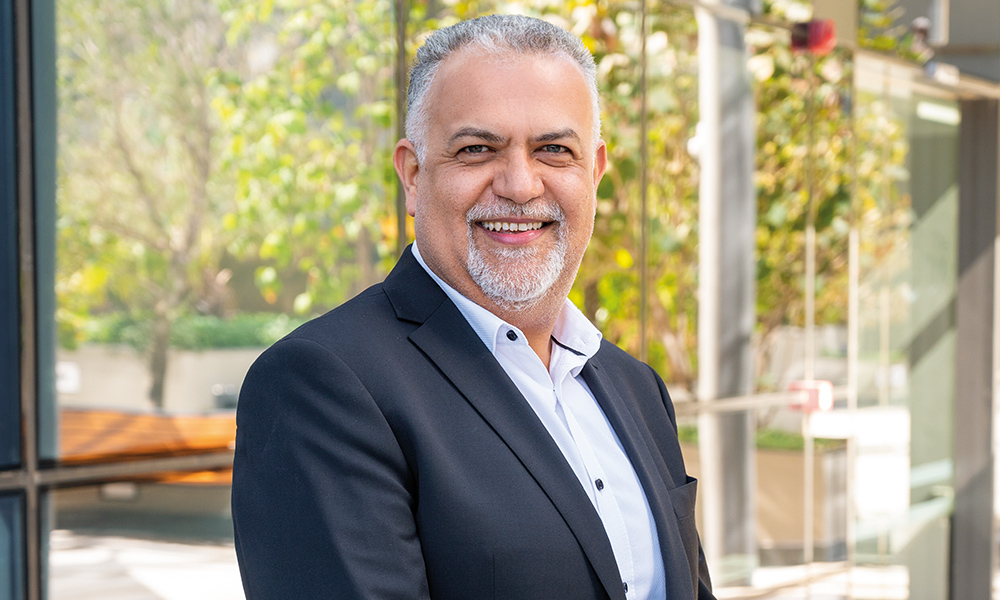
George Matta, Director – Middle East, TBH
As a project delivery and dispute management company, what are the benefits and challenges of operating in both service arenas?
Colin said “There are many benefits. A very important bi-product of our wide-ranging background and experience in terms of project delivery is that when you’ve been involved in just about every part of the process, across major projects of every type, you know the kind of issues that a court or a judge, for example, will see as substantive. So, across the company, we have an exceptional, in-depth grasp of these processes. This means that when it comes to other areas of expertise – like dispute resolution – we know where to focus our attention before things can deteriorate further, or even get to the point where they’re irreversible.”
“When you understand what events lead to disputes, the next step is that you try to prevent those events from ever happening. So, we put in place proactive risk management techniques that help reduce them. In this way, you can see that it’s very, very helpful to have both sides of the business, project delivery and dispute resolution: it means we are extremely well-placed to help companies with what I call ‘dispute avoidance’.”
“After all, do people want to avoid a dispute if humanly possible? Absolutely. It’s reassuring for them if they can appoint an expert to intervene. This is perhaps the best way to resolve what may otherwise become really damaging issues. Remember, the sooner this intervention can take place, the better; it means there will be less disputes that are able to de-rail the project. It’s also important to have a third party, objective presence that can say: this is my recommendation.”
“Also, in terms of the 360-degree understanding that our experience brings, there are two points that I would like to add, which the majority of organisations overlook, or simply aren’t aware of. Firstly, when the incidents do occur, a constant question is the quality of the records that are brought forward to support what has been happening or is alleged to have been happening. We are constantly trying to talk to our clients about their processes and their records, and the need for the most professional, pristine record-keeping. Crucial though all this is, I should also mention that in my view, no matter how good the company’s records and processes are, if you have staff who aren’t going to follow those processes, you’re inviting problems of every kind. Because at the end of the day, it’s people who manage construction, not AI or IT.”
“Then, there’s the second point. Every clause in a contract can be viewed from the client’s side or the contractor’s side – and it’s not so much a question of how do the two views actually differ, but rather, what does the client actually mean by that clause in the first place? This is where major misunderstandings can creep in because the whole contract and the way it’s been drafted will be driven by what those expectations are. The reality is, even if a client thinks a contract is iron-clad, they are never iron-clad.”
Are there any trends in the dispute resolution market in the Middle East which really stand out for TBH?
“There’s good news and bad news in terms of what’s trending in the dispute resolution market. One of the trends we are seeing is more disputes. There are not only more of them, but they’re happening further down the supply chain. Suppliers and small sub-contractors are becoming more aware of their rights and their obligations and more mature in terms of pursuing their rights under the contract – which in essence can only be a good thing. But the reality is, what all this means is more claims and more disputes,” Colin believes.
“Yet what this tells me is that it’s vital to have early intervention, and preferably, that intervention is a dialogue that takes place as the contract is drafted and which goes on to inform every clause. As dispute resolution specialists, we’re the first to say that the best way to solve a disagreement is to remove the likelihood of it ever happening, and ideally, that means going back to the first principles – and getting them right from Day One.”
Read more:
- The intricacies of delivering successful projects
- How data-driven programme management ensures every project hits the ground running
- Omnium International expands project management service



